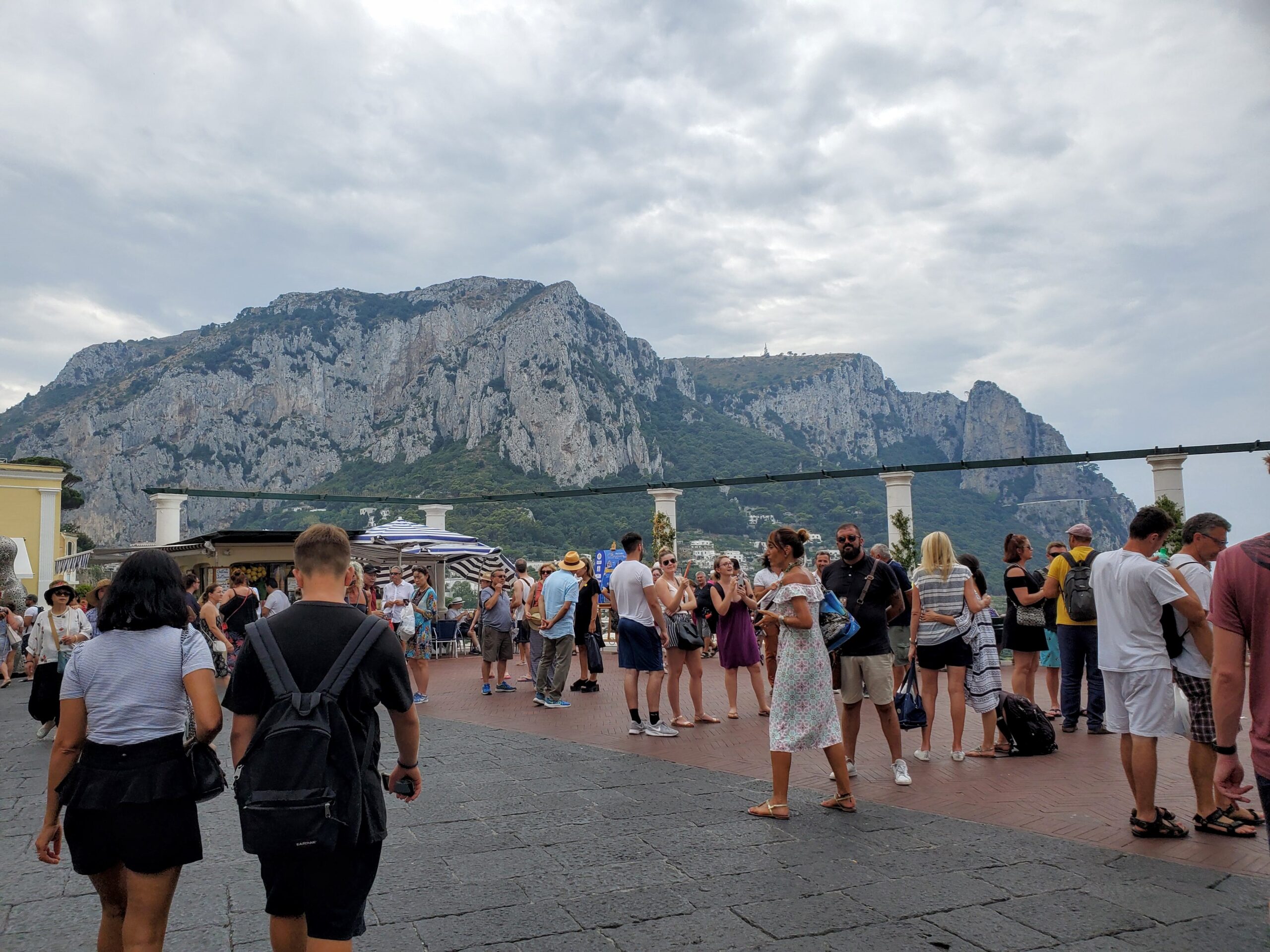Choosing the best time for a Mediterranean cruise is more than just picking dates on a calendar—it’s about crafting the perfect experience. Whether you’re drawn to sun-soaked beaches, ancient ruins, or charming coastal towns, timing your trip right can make all the difference. (And so does choosing the right Mediterranean cruise line.)
For a truly memorable journey, consider sailing during the spring or fall shoulder seasons. In April, the Mediterranean bursts into life with blooming flowers and mild temperatures, ideal for exploring without the sweltering heat. September and October offer warm seas and vibrant landscapes, along with the added charm of harvest festivals. These months strike the perfect balance: comfortable weather, fewer tourists, and often lower prices.
Summer may promise endless sunshine, but it also brings peak crowds to many Mediterranean cruise ports and higher costs. By opting for the shoulder seasons, you’ll enjoy a more relaxed, rewarding cruise—one where you can immerse yourself in the wonders of the Mediterranean without the hustle and bustle. Whether you’re strolling through ancient cities or savoring local delicacies, the right timing will make your Mediterranean adventure truly unforgettable.

Seasonal Overview
The Mediterranean offers distinct and captivating experiences year-round for cruise travelers. Each season brings its own unique charm, from bustling summer beaches to peaceful winter ports. Let’s explore what you can expect throughout the year and highlight some popular destinations for each season.
Spring (March to May)
Quick Summary:
Spring is a sweet spot for Mediterranean cruises. With mild temperatures ranging from the 60s to 70s (Fahrenheit), it’s perfect for sightseeing without the summer heat. You’ll enjoy fewer crowds, lower prices, and landscapes bursting with blooming flowers. However, some beach facilities might not be fully open yet. And, you’ll also want to pack layers for the changeable weather.
A Closer Look:
Spring in the Mediterranean brings a balance of pleasant weather, vibrant landscapes, and fewer tourists.
Popular destinations include:
- Greek Islands: Perfect for exploring ancient ruins and enjoying the early blossoms.
- Italian coastal cities: Rome, Naples, and Venice are less crowded, offering comfortable sightseeing.
- Spanish coastal towns: Barcelona and Valencia provide a mix of culture and mild weather.
- Croatian coast: Dubrovnik and Split are stunning in spring with their lush greenery.
Expect occasional rain showers and consider participating in local festivals that add cultural richness to your cruise experience.
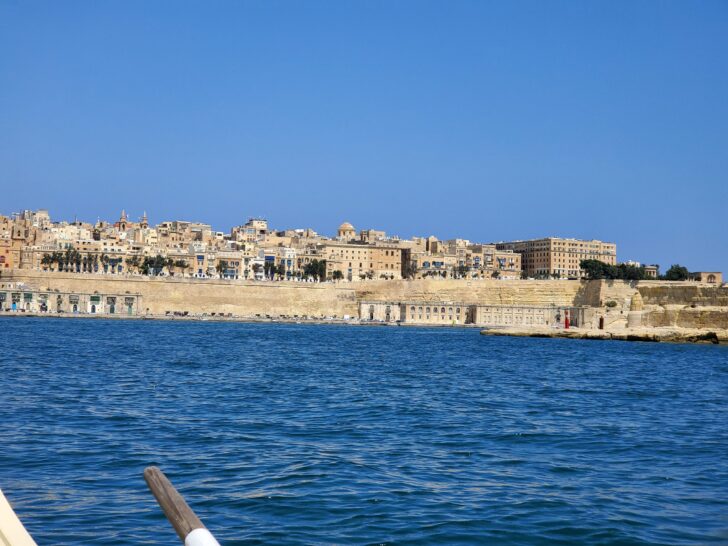
Summer (June to August)
Quick Summary:
Summer is the Mediterranean’s busiest season, with hot, sunny days and vibrant coastal towns. Temperatures often soar into the 80s and 90s, perfect for beachgoers but also bringing crowds and higher prices. Book excursions early, and pack light, breathable clothing and plenty of sun protection.
A Closer Look:
Summer in the Mediterranean is all about sun-soaked days and lively atmospheres. The sea temperatures are ideal for swimming, and long daylight hours maximize your time for exploration.
Popular destinations include:
- Greek Islands: Mykonos, Santorini, and Crete are bustling with activity.
- French Riviera: Nice, Cannes, and Monaco are at their most glamorous.
- Amalfi Coast: The colorful coastal towns of Italy shine in the summer sun.
- Spanish Balearic Islands: Ibiza and Mallorca are lively and vibrant.
- Turkish coastal cities: Istanbul and Kusadasi offer a mix of history and beach life.
It’s the perfect time for outdoor events, but be ready for crowded beaches and premium prices.
Fall (September to November)
Quick Summary:
Fall is a fantastic time for Mediterranean cruises, offering warm days and mild evenings with fewer tourists. Early fall is great for swimming, while later months focus on cultural activities and sightseeing. Prices drop after the summer peak, and you might catch some end-of-season sales.
A Closer Look:
The Mediterranean in fall offers a wonderful balance of pleasant weather and reduced crowds. With temperatures in the mid-60s to mid-70s, it’s ideal for exploring historical sites and enjoying outdoor activities without the summer’s intensity.
Popular destinations include:
- Italian coastal cities: Rome, Venice, and the Amalfi Coast are particularly pleasant.
- Greek Islands: Still warm enough for enjoyable visits, with fewer crowds than in summer.
- Spanish cities: Barcelona and Valencia blend culture and mild weather perfectly.
- Croatian coast: Dubrovnik and Split are charming in autumn, with beautiful scenery.
- Turkish Riviera: Bodrum and Antalya remain warm and inviting.
Enjoy local harvest festivals and spectacular autumn colors, but be prepared for shorter days and occasional rain.
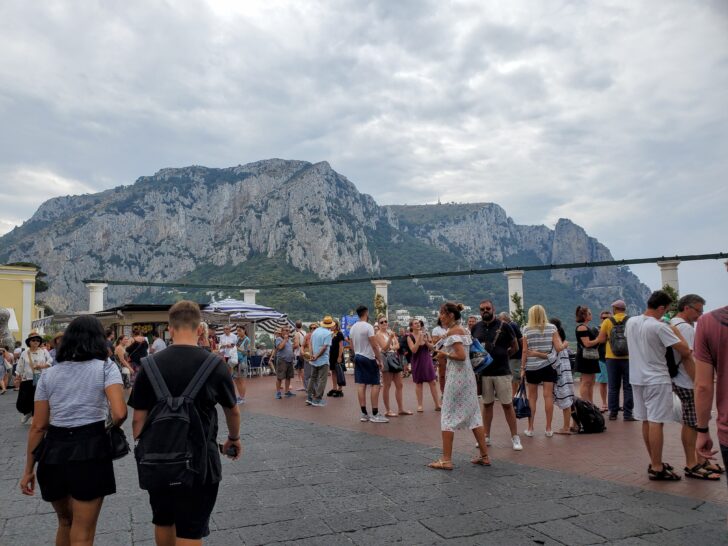
Winter (December to February)
Quick Summary:
Winter offers a quieter Mediterranean experience with cool temperatures and fewer crowds. It’s perfect for city explorations and cultural visits, especially during festive holiday markets. Cruise prices are the lowest, but itinerary options might be limited due to ship repositioning.
A Closer Look:
Winter in the Mediterranean is mild compared to northern Europe, but cool and often rainy. It’s a peaceful time to explore cities and enjoy cultural experiences.
Popular destinations include:
- Spanish cities: Barcelona and Valencia are perfect for cultural visits without the summer crowds.
- Italian art cities: Rome, Florence, and Venice are ideal for museum visits and indoor activities.
- Greek historical sites: Athens and other ancient sites are more comfortable to explore in cooler weather.
- Holy Land cruises: Israel and Egypt offer unique historical and spiritual experiences.
- Canary Islands: These Spanish islands off the coast of Africa provide milder winter temperatures and beautiful beaches.
Winter cruises offer a unique perspective on the region, with opportunities for festive holiday experiences and quiet cultural exploration.
Best Time for a Mediterranean Cruise: Key Factors to Consider
Picking the right time for your Mediterranean cruise can make or break your trip. Several key elements, including weather, crowd levels, cost, local events, daylight hours, and your personal interests, play a role in creating the perfect experience.
Weather Preferences
Weather is a major factor when deciding the best time for a Mediterranean cruise. The Mediterranean climate varies throughout the year, offering something for everyone depending on your comfort level with heat or cooler temperatures.
- Spring (April to May) and Fall (September to October): These seasons offer mild temperatures, usually around 60-75°F (15-24°C), making them ideal for sightseeing and outdoor activities. The weather is comfortable without the intense summer heat, perfect for those who prefer a milder climate. However, it’s important to remember that Mediterranean weather can be unpredictable, so packing layers is always a good idea.
- Summer (June to August): If you love warm and sunny conditions, this is your time to cruise. Expect hot weather with temperatures often reaching the 80s and 90s°F (27-35°C). The skies are clear, making it perfect for beach lovers and sun-seekers who want to soak up the sun.
- Winter (November to March): Cooler and wetter, with temperatures ranging from 50-60°F (10-15°C). Winter might not be ideal for beach activities, but it’s perfect for city explorations and museum visits. Some attractions may have limited hours or be closed during this season.
When choosing your cruise date, consider your comfort level with different weather conditions. Remember, onboard activities are available year-round, regardless of the weather outside.
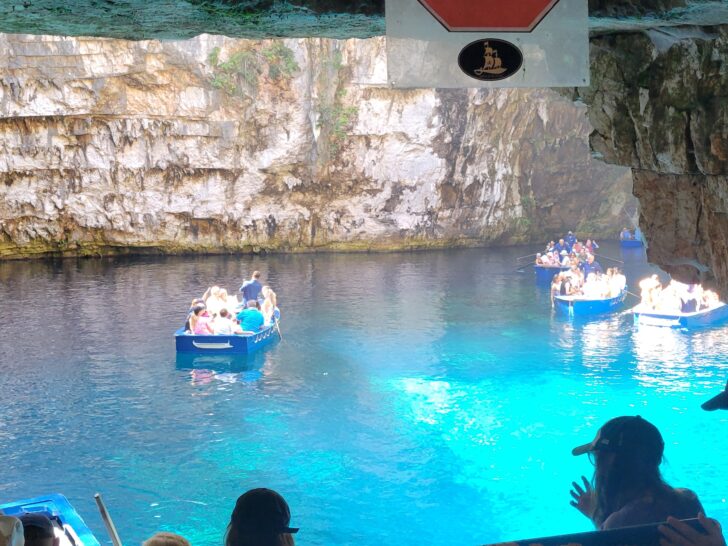
Crowds and Peak Travel Periods
The Mediterranean is a popular cruise destination, especially during the summer months. However, due to varying crowd levels, the time of year you choose can greatly impact your experience.
- Summer (July and August): This is the busiest time for Mediterranean cruises, with peak tourist traffic, especially in popular ports like Barcelona and Rome. Families on school breaks contribute to the larger crowds. If you prefer fewer crowds, you might want to avoid these months.
- Shoulder Seasons (Spring: April to May, Fall: September to October): These months offer a good balance of pleasant weather and smaller crowds. Traveling during the shoulder seasons usually provides a more relaxed experience, allowing you to explore ports and attractions without the hustle and bustle of peak season.
- Winter (November to March): Winter cruises have the fewest tourists, offering quiet ports and no lines. This is perfect if you enjoy a more serene atmosphere. However, remember that some shops and restaurants might be closed for the season.
Also, major holidays like Easter and Christmas should be considered, as these can bring more travelers to certain destinations. Plan accordingly if you want to avoid or join these festive times.
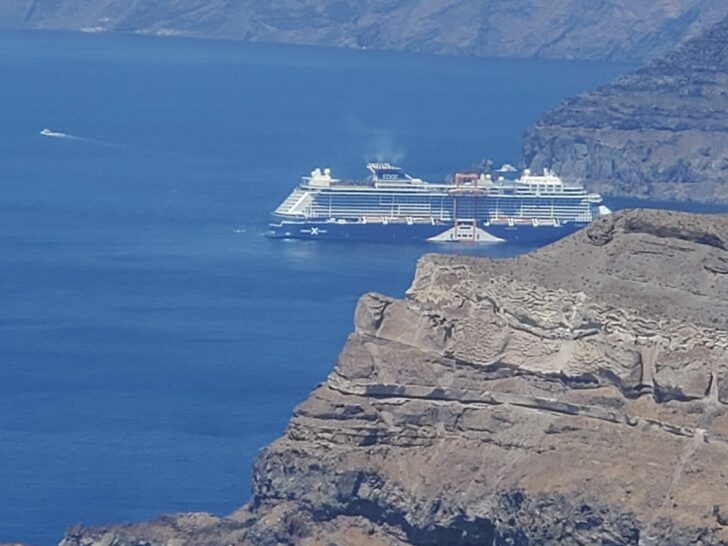
Cost Considerations
Cruise prices can vary significantly depending on the time of year, directly influenced by demand.
- Summer (July and August): These are the peak months, typically the most expensive due to high demand. If you plan to cruise during these months, be prepared for higher costs.
- Winter (November to March): Winter cruises often offer the best deals. Significant discounts are available during these months, excluding holiday weeks, making them an attractive option for budget-conscious travelers.
- Shoulder Seasons (Spring and Fall): These periods usually have moderate prices, offering a good balance between cost and desirable weather. Booking during the shoulder seasons can provide better value for money.
Look out for special promotions such as early booking discounts, last-minute deals, and Wave season offers (January to March). Don’t forget that airfare to your departure port can also affect your overall cost, so consider flight prices when planning your cruise dates.
Local Festivals and Events
The Mediterranean region is rich in cultural celebrations, and timing your cruise to coincide with local events can add excitement and a unique cultural dimension to your trip. Mediterranean festivals not only offer enhanced cultural immersion but also provide opportunities for special shore excursions and unique photo moments. However, they can also lead to increased crowds and higher prices, so careful planning is key.
If you want to maximize your festival experience, coordinate your embarkation or disembarkation port so that you have more time in your festival city/country. So, for instance, if you want more time to experience the Venice Biennale in the spring, or the Venice Film Festival in the fall, look for cruises starting or ending in Venice. You’ll find many options!
Spring:
- Las Fallas in Valencia, Spain (March): This fiery celebration is famous for its elaborate parades and large, intricate paper-mâché figures that are eventually set ablaze. Experiencing Las Fallas offers a deep dive into Spanish culture.
- Holy Week Celebrations (March/April): Across Spain and Italy, Holy Week is observed with solemn processions and events, making it a poignant time to visit.
- Greek Independence Day (March 25): A major national holiday in Greece, marked by parades and celebrations, especially vibrant in Athens.
- Venice Biennale (starts in April, odd-numbered years): A renowned art exhibition that attracts visitors worldwide, adding an artistic flair to your cruise experience.
Summer:
- Cannes Film Festival (May): The world-famous film festival draws celebrities and film enthusiasts to the French Riviera. While it brings glitz and glamour, it also means crowded ports and higher prices in Cannes.
- San Fermín Festival (Running of the Bulls) in Pamplona, Spain (July): This festival is a unique cultural spectacle known for the thrilling running of the bulls.
- Dubrovnik Summer Festival (July-August): This long-running festival features music, theater, and dance performances set against the stunning backdrop of Dubrovnik’s historic old town.
- Festa del Redentore in Venice (July): This historic event with religious origins is celebrated with a spectacular fireworks display over the Venetian lagoon.
Fall:
- Venice Film Festival (August-September): Held on the Lido, this is one of the most prestigious film festivals globally, drawing international attention.
- Monaco Yacht Show (September): A premier event for yacht enthusiasts, showcasing the latest in luxury yachting in the glamorous setting of Monaco.
- Notte Bianca in Malta (October): A night-time cultural celebration where museums, historic buildings, and streets are alive with music, art, and performances.
- Chestnut Festival in Cremolina, Italy (October): A charming local festival celebrating the chestnut harvest, offering a taste of regional traditions.
Winter:
- Christmas Markets: Found in various cities, these festive markets are perfect for holiday shopping and experiencing local traditions. Cities like Barcelona and Rome are beautifully decorated, and markets sell everything from crafts to seasonal foods.
- Carnival Celebrations in Venice and Nice (February): Carnival is celebrated with grand parades, masks, and balls, offering a glimpse into the historic and cultural richness of these cities.
- Fête du Citron (Lemon Festival) in Menton, France (February-March): This unique festival celebrates lemons with vibrant parades, sculptures, and displays, all themed around citrus fruits.
Impact of Festivals on Cruise Experiences:
- Enhanced Cultural Immersion: Festivals showcase a destination’s culture, providing cruisers with unique insights into local traditions, music, and cuisine.
- Special Shore Excursions: Cruise lines often offer special excursions or extended stays in ports during major festivals, allowing passengers to fully experience the events.
- Increased Crowds: Popular festivals can lead to more crowded ports and attractions, potentially impacting the ease of exploration.
- Higher Prices: During major events, prices for local services and accommodations may increase.
- Limited Availability: Some festivals may require advance tickets or have restricted access, necessitating careful planning.
- Potential Schedule Changes: Cruise itineraries might be adjusted to accommodate or avoid certain events, depending on their scale and impact on port operations.
- Unique Photo Opportunities: Festivals often provide spectacular visual displays, offering great photography opportunities for cruisers.
- Onboard Celebrations: Some cruise lines incorporate festival themes into their onboard activities, extending the celebratory atmosphere.
When planning a Mediterranean cruise, consider aligning your trip with festivals that interest you for a more immersive experience. However, be prepared for potential challenges like crowds and higher costs.
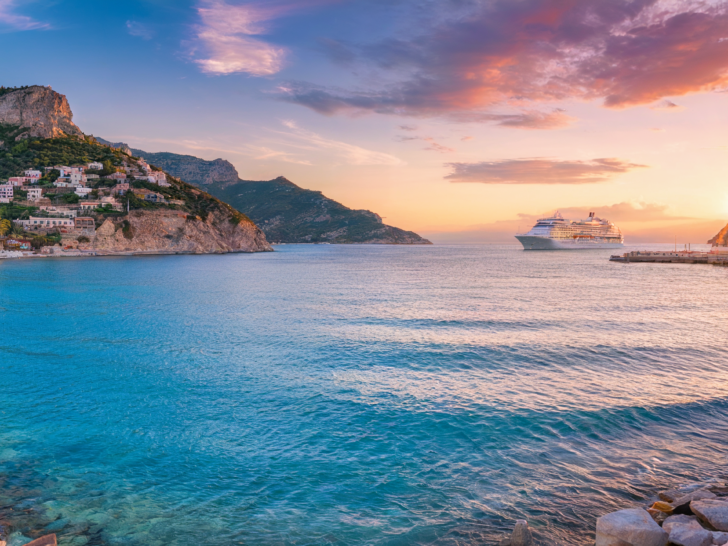
Daylight Hours
The amount of daylight can greatly impact your sightseeing and shore excursions, as it varies significantly across seasons in the Mediterranean.
- Summer (June to August): Summer offers the longest days, with up to 15 hours of daylight in June and about 14 hours in July and August. This means more time for exploring ports and enjoying outdoor activities.
- Winter (December to February): Winter has the shortest days, with as little as 9-10 hours of daylight. This might limit your time for activities and excursions, so consider how much daylight you’ll need for your planned activities.
- Spring and Fall: These seasons have moderate daylight hours, usually around 12-13 hours per day, offering a good balance for sightseeing without the intense midday heat of summer.
More daylight means more time for exploring, but summer’s long days also bring intense midday heat, which might require you to plan your outdoor activities accordingly.
Special Interests and Activities
Your personal interests can guide the best time for your Mediterranean cruise. Different seasons offer unique experiences, so it’s important to match your cruise timing with the activities you most enjoy.
- Beach Lovers: Summer is ideal for swimming and sunbathing, with the warmest water temperatures from June to September.
- History Buffs: Spring and fall offer comfortable weather for exploring ancient ruins, museums, and cultural sites.
- Foodies: Fall brings harvest seasons and food festivals, while spring offers fresh, seasonal produce. Wine enthusiasts might prefer the fall harvest season to visit vineyards and participate in wine-tasting tours.
- Nature Enthusiasts: Spring showcases blooming wildflowers, and fall displays beautiful autumn colors in some regions, making these seasons perfect for hiking and outdoor adventures.
- Shoppers: Winter sales in January and summer sales in July/August can offer great deals on shopping in port cities.
Consider what activities are most important to you and choose your cruise timing accordingly to ensure the best experience.
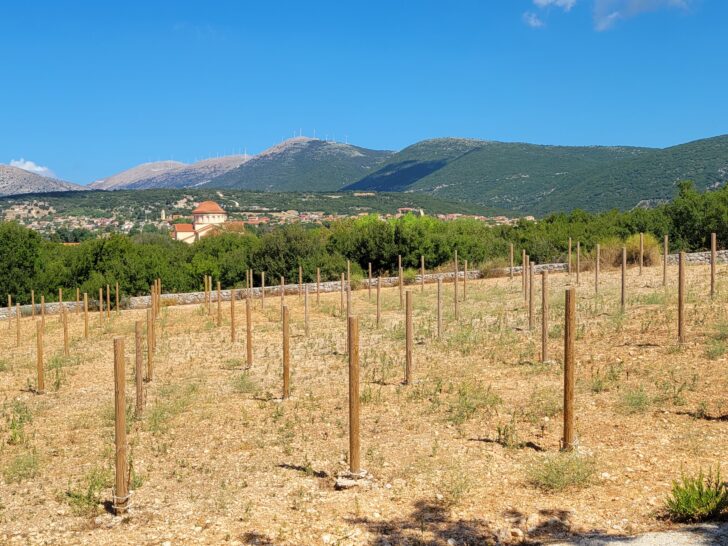
Family Travel Considerations
Taking a Mediterranean cruise with your family can be an exciting adventure. The timing of your trip affects your experience in important ways, from the weather to the availability of family-friendly activities. Let’s look at the best times to go and how to make the most of educational opportunities for your kids.
Best Times for Family Travel
Summer is a popular choice for family cruises, especially from late June to August, when kids are on summer vacation. The warm weather during these months is perfect for swimming and outdoor activities, and cruise lines often cater to families with special activities like water slides, movie nights, and interactive games. However, summer also comes with drawbacks—crowds are bigger, prices are higher, and the heat can be tough on younger kids.
If you’re looking for a balance between family-friendly weather and fewer tourists, consider cruising in late September to October. The weather remains mild, making it ideal for outdoor exploration, but with the added benefit of less crowded attractions and lower prices.
For families with flexible schedules, an April cruise is also a fantastic option. During this time, you can enjoy:
- Pleasant temperatures
- Blooming flowers
- Easter celebrations in some ports
- Good deals on cabins
This shoulder season offers a comfortable environment for both parents and kids to enjoy outdoor activities without the intensity of summer heat.
Educational and Quieter Travel Experiences
Off-peak seasons, such as spring or late fall, provide your family with unique educational opportunities. With fewer crowds in these times, you can take your time at historic sites and museums, allowing your kids to fully absorb the cultural experiences without feeling rushed or overwhelmed.
Visiting iconic port cities like Rome, Athens, and Barcelona during quieter months means more intimate guided tours and less competition for access to major attractions. Your family can enjoy exploring famous landmarks like the Colosseum, Acropolis, or Sagrada Familia with more space and peace, leading to richer learning moments.
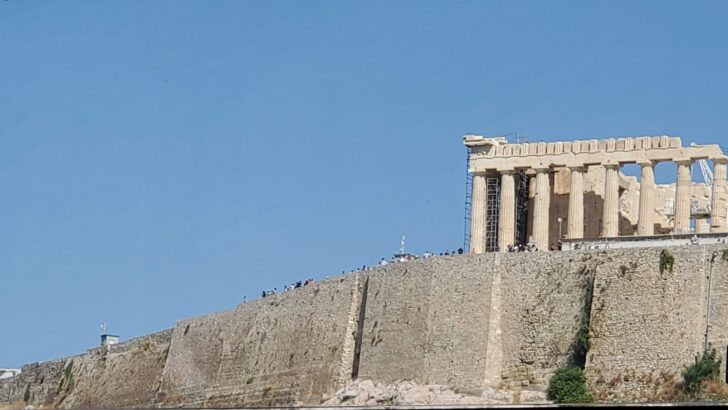
Many cruises also offer onboard educational programs and talks, adding an extra enrichment layer to your journey. Quieter ports mean more chances to chat with locals, giving your family a real feel for the culture and daily life in each place you visit.
By focusing on slightly off-peak times, you ensure a quieter environment that can make the whole trip more enjoyable and educational for everyone involved.
Health and Safety Considerations
Staying healthy and safe on your Mediterranean cruise is key to having a great trip. Knowing what to expect in each season can help you prepare and avoid potential problems, ensuring a fun and worry-free vacation.
Seasonal Health and Safety Tips
Summer:
Summer cruises bring hot weather, so it’s essential to protect yourself from the sun and stay hydrated. Always wear sunscreen, a hat, and sunglasses to avoid sunburn. Make sure to drink plenty of water throughout the day to prevent dehydration.
It’s also wise to avoid outdoor activities during peak sun hours, typically between 11 a.m. and 3 p.m. when the sun is at its strongest. This simple precaution can help you avoid heat exhaustion and other heat-related issues.
Spring and Fall:
Spring and fall cruises offer milder temperatures, but they can also bring cooler, rainy days. To stay comfortable, pack layers that you can easily add or remove as the weather changes.
Rain showers can catch you by surprise, so it’s a good idea to keep a light raincoat or umbrella handy. The cooler weather is perfect for exploring, but always check the local forecast to be prepared for any sudden changes in conditions.
Winter:
Winter cruising in the Mediterranean is less crowded, offering a peaceful experience, but it can also be chilly. Bring warm clothing and sturdy walking shoes for comfort, especially if you plan to spend time exploring port cities. Be cautious of wet and icy surfaces, particularly on deck, as they can be slippery.
General Tips:
Regardless of the season, it’s always a good idea to be prepared for potential sea conditions. Summer typically brings the calmest seas, but if you’re prone to seasickness, you might want to avoid winter cruises when waves can be bigger. Pack motion sickness medicine just in case.
Always wash your hands often and use hand sanitizer on the ship to avoid illness. In busy ports, be aware of your surroundings to stay safe from pickpockets. It’s also a good idea to get travel insurance in case of any health issues while abroad.
By planning ahead and following these health and safety tips, you can ensure a safe and enjoyable cruise experience in any season.
Destination-Specific Tips
The Mediterranean offers a wealth of experiences across its diverse regions. Each area has its own unique charms and factors to consider when planning your cruise. Whether you’re exploring ancient ruins, vibrant cities, or scenic coastal towns, these tips will help you make the most of your journey.
Eastern Mediterranean
The Eastern Mediterranean is ideal for history buffs and those who love exploring ancient cultures. Greece, Turkey, and Croatia shine in this region, offering rich historical sites and stunning landscapes.
- Greece and Turkey: Athens is a must-see in spring when temperatures are mild, and crowds are thinner, making it the perfect time to visit the Acropolis without breaking a sweat. For Turkey, aim for May or September, when Istanbul’s Grand Bazaar is more enjoyable without the sweltering heat. Ephesus, with its ancient ruins, is best explored in cooler months, offering a more comfortable experience.
If you’re visiting in the summer months (June to August), be prepared for warm weather and bustling crowds, especially in popular destinations like Santorini and Mykonos. If you’re interested in famous landmarks like the Acropolis or Ephesus, it’s a good idea to book excursions in advance. Pack light, breathable clothing and comfortable shoes for walking on cobblestone streets. Don’t miss out on trying local cuisines, such as Greek souvlaki or Turkish kebabs, which are must-try dishes. - Croatia: Dubrovnik is another highlight in the Eastern Mediterranean, known for its well-preserved medieval architecture. Visiting in late spring or early fall offers the best weather and fewer crowds, allowing you to explore the city walls and Old Town with ease.
Remember to pack modest clothing for visiting religious sites. A light scarf comes in handy for covering shoulders when needed.
Western Mediterranean
The Western Mediterranean is a blend of cultural and culinary delights, with ports such as Spain, France, and Italy offering a mix of art, history, and cuisine.
- Spain and France: Barcelona is lovely in April or October, where you can comfortably explore Gaudí’s masterpieces and avoid long lines at popular sites. The French Riviera sparkles in June or September, providing nice weather without the intense August crowds. Don’t miss a stroll through Nice’s charming old town or enjoy the beach in Cannes.
Summer months from June to August are bustling, particularly in hotspots like the French Riviera and the Amalfi Coast. If you visit during these months, be prepared for higher prices and larger crowds. Keep an eye on local events and festivals that might be happening, as they can provide unique experiences but also bring additional crowds. - Italy: For Italy, consider a spring or fall cruise. Rome and Florence are more pleasant without summer’s heat, allowing you to explore the Colosseum or Uffizi Gallery in comfort. Venice is magical year-round, but autumn brings fewer tourists and lovely light for photos. Don’t forget to try regional specialties like Spanish paella or Italian gelato as you explore these vibrant locales.
Pack comfortable walking shoes as you’ll want to explore these cities on foot, and be sure to enjoy the culinary delights that each region has to offer.
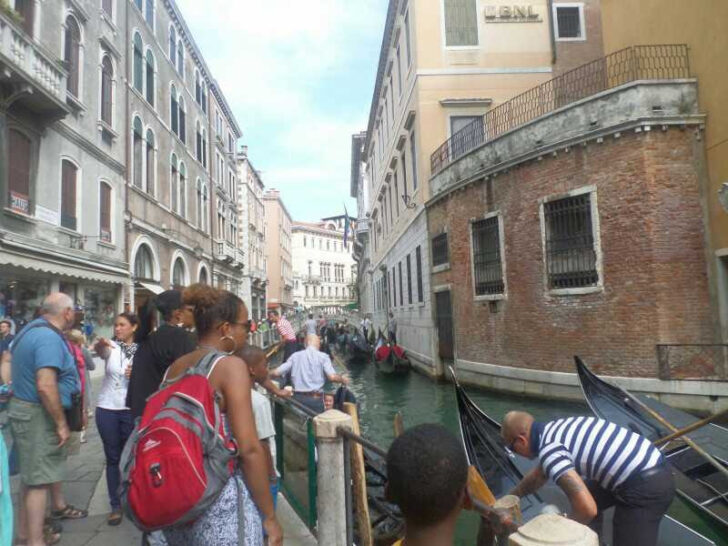
Southern Mediterranean
The Southern Mediterranean offers a different vibe, with places like Malta, Tunisia, and the southern coast of Italy providing a mix of medieval history, beautiful beaches, and unique cultural experiences.
- North Africa (Morocco, Tunisia, and Egypt): Morocco is best visited in spring or fall when the weather is temperate, and Tangier’s Medina can be explored without the intense summer heat. Tunisia shines in May or October, allowing you to explore Carthage’s ruins and the beautiful blue and white village of Sidi Bou Said without wilting in the heat. Egypt cruises often include stops in Israel too, with March-April or October-November offering the most pleasant temperatures for visiting the pyramids or Jerusalem’s Old City.
If you decide to visit during the summer months, be prepared for intense heat, especially in North African destinations like Tunisia. This region is known for its crystal-clear waters, so make sure to enjoy some beach time. Pack sunscreen, a hat, and lightweight clothing to stay comfortable. - Malta: Malta is a hidden gem in the Southern Mediterranean, offering a blend of history and natural beauty. Spring and fall are the best times to visit, with mild weather perfect for exploring the island’s medieval towns and stunning coastlines. Sample local dishes like Maltese pastizzi or Tunisian couscous to round out your experience.
Always respect local customs and dress codes. A light, long-sleeved shirt and pants are versatile for both men and women, especially when visiting religious or culturally sensitive sites.
Closing Thoughts
Choosing the best time for your Mediterranean cruise depends on your preferences and priorities. Consider your budget and the activities you want to enjoy at each port. Off-season can bring great deals, but some attractions may have limited hours. No matter when you sail, the Mediterranean’s charm will make your cruise unforgettable. Pack appropriately for the season, and you’ll be ready for your dream adventure.

